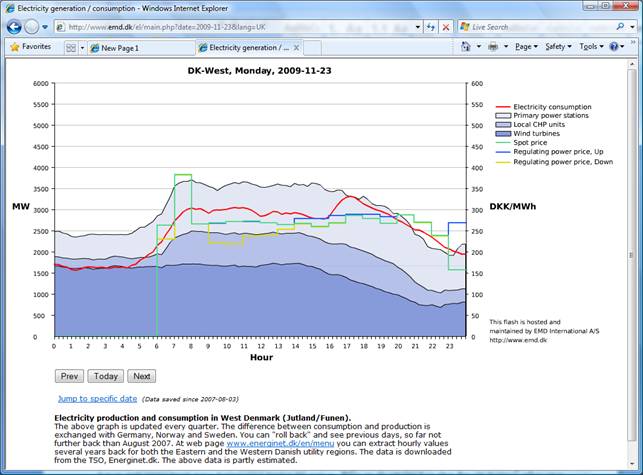Anders N. Andersen, Focus of my work:
Investment and Operation of Local Energy Plants in a Market Based Sustainable Energy System
I have two important starting points for my work:
-
We have the technologies necessary for making a sustainable energy system based on 100% renewable energy.
-
Denmark is a part of European Union, in which energy supply is market based.
It is a challenge in a market based energy system to make people and companies use the sustainable energy technologies and also use the right sustainable energy technologies.
Certainly a lot of intelligent public regulation is needed, and when it comes to the focus of my work, also a lot of analysis has to be made to choose the right investments in the local energy plants and to choose the right daily operation of these plants.
In the last
20 years in which I have worked with investment and operation of local energy plants, a challenging development has taken place in the Western part of
Denmark (where Aalborg University is situated).
50 % of
the electricity market has in the last 20 years been moved from central plants
to local plants.
Status 2009 for electric capacities in West Denmark:
We
have illustrated this development in the homepage, www.emd.dk/el, which
online receives production and consumption data from the server of the Danish
Transmission System Operator, Energinet.dk.
This homepage shows the challenge of the market based integration of fluctuating
wind productions. From this homepage is below shown productions and consumption
of 23. November 2009. In
the graph is also shown the spotprices (green line) and the activation prices
in the Regulating Power market (blue and yellow lines). It is seen in the graph that in the hours, where the turbines produced equal
to the consumption, the prices in the spot market was 0. This is a strong
markedsbased signal to the other producers not to produce in these hours. The market based integration
of fluctuating wind productions is made through the electricity markets:

We have made homepages which online receives data from two local CHP-plants:
Both of these plants participate in the Spot market and the Regulating power market.
The implementation of new energy technogies: There seems to be good good reasons for following these phases.
Valuable learning has to be made in each phase. The computer model energyPRO: In the last 20 years we have here in
Aalborg developed a computer model, energyPRO, which allow quick and detailed
modelling of the operation and economy in these local energy plants. I normally stress for my students,
that we start by making simple calculations in spreadsheets, so that they
understand the fundamental ideas how to operate these plants. But it certainly
is much easier and faster to model these plants detailed in energyPRO. energyPRO enables the user to find
technically and economically feasible solutions for the size, configuration and
operation of modern energy conversion plants, in particular co-generation plants,
under given organisational and technical constraints. These constraints make the analysis
complicated. To mention some, normally, the demand for electricity is high
in the morning and in the afternoon, and lowest during night, weekends and
holidays. Therefore, prices paid for the produced or consumed electricity may
vary significantly with the time of the day. On the other hand, a heat demand is
normally low during summers and many times higher during winters. This mismatch between the need for
electricity and heat can be solved with the storage of heat in short-term
accumulation tanks (thermal store). Furthermore, heat blow-off capacity
may allow electricity producing energy units to be used more flexibly.
Restrictions of the amount of fuel can be another challenge. Biogas e.g. can be
restricted in amount, and stored in fuel storages. Alternatively, a CHP unit can
run on two types of fuel, e.g. biogas and natural gas, where biogas is
restricted in amount and can be stored in a biogas storage, and the produced
heat can be stored in a heat storage. Furthermore an energy unit can
run with or without an economizer. Another complexity can be that the electricity
productions are restricted to a certain demand for electricity e.g. the
electricity demand in a city or the amount of electricity sold on the
electricity market. Furthermore, electricity consuming heat pumps increases the
complexity of energy system calculations for an energy plant. In energyPRO it is possible quickly to try
the effect of different control strategies, and see the economic
consequences of these. I hope th
Converting an energy system from fossil fueled to renewable energy requires
implementation of many new energy technogies. We find the way in which we have
in the last 20 years implemented local CHP-plant is an important example of how
to implement a new energy technology in a good manner. The implementation has
been divided into 4
phases: